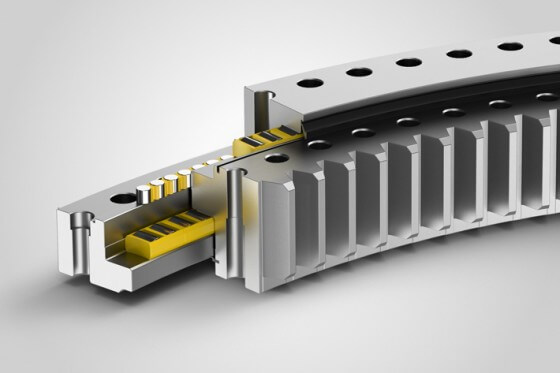Liebherr says it has opened up new possibilities for wind turbine operators and service providers with optimized blade bearings, with a three-row roller bearing design that is designed to help extend the service life of wind turbines even under high loads.
The company is now also offering the new roller bearing design as a blade bearing. It is proven in series production and is an alternative lifetime upgrade for the maintenance and operation (O&M) of older wind turbine models. This improved solution from Liebherr-Components replaces the traditional two-row ball slewing rings commonly available. When used as a blade bearing, the three-row roller bearings show potential in terms of dimensioning, load absorption and a longer service life.
With over 26 years of experience in manufacturing slewing bearings for the wind industry and other industries, Liebherr has delivered more than 9,000 series-produced roller bearings to wind turbine manufacturers.
When developing bearings for the service market, Liebherr does not only focus on the given market requirements and those of wind turbine manufacturers, but also on the needs of the O&M market. The Liebherr team analyses damage patterns in the field and optimizes products to avoid them. With constant dimensions and easy interchangeability, the enhanced bearing carries higher loads and reduces known damage patterns, such as edge wear.
With their stronger load capacity, long maintenance intervals and significantly extended service life of up to 50%, they ensure permanent availability and thus reduced operating and investment costs over the entire service life of wind turbines. This prevents further cost-intensive blade bearing exchanges, as well as long downtimes and the resulting yield losses.
“However, it is not only the wind turbine owners, operators and service providers, who can benefit from this, but also the environment,” explains Zina Charis Gebauer, business development manager of wind aftermarket at Liebherr-Components AG. “Fewer replacement components reduce the consumption of resources and the CO2 production incurred not only in the manufacturing process, but also within the entire value chain, such as the raw material supply and global logistics.”




